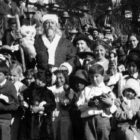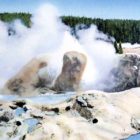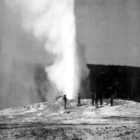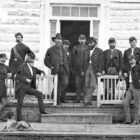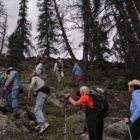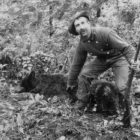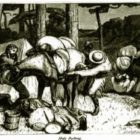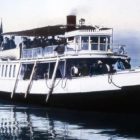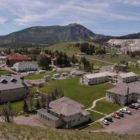
Most of the earliest Yellowstone National Park tourists came from Montana because that’s where the access rivers ran. The north entrance via the Yellowstone River was 60 miles from the farm town of Bozeman, and the west entrance via the Madison was 90 miles from the gold rush town of Virginia City. Both rivers flow through rugged canyons that made travel difficult. In fact, the Madison Canyon was so bad that early travelers chose to cross the continental divide twice to avoid it. But that was a small sacrifice. Passage over the Raynolds and Targhee Passes was relatively easy. Besides, traveling this route provided the reward of a stop at Henry’s Lake. Continue Reading →

